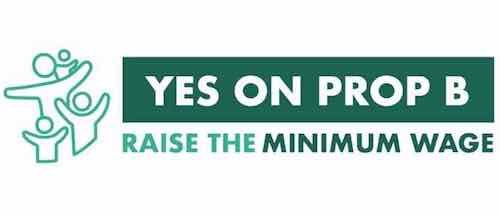Sunday Poll: Can Missouri Afford A Hyperloop Between St. Louis & Kansas City?

Today’s poll involves a rather technical new idea, so it makes sense to look at what it is first:
A Hyperloop is a proposed mode of passenger and/or freight transportation, first used to describe an open-source vactrain design released by a joint team from Tesla and SpaceX.[1] Drawing heavily from Robert Goddard’s vactrain, a hyperloop is a sealed tube or system of tubes through which a pod may travel free of air resistance or friction conveying people or objects at high speed while being very efficient.
Elon Musk’s version of the concept, first publicly mentioned in 2012,[2] incorporates reduced-pressure tubes in which pressurized capsules ride on air bearings driven by linear induction motors and axial compressors.[3]
The Hyperloop Alpha concept was first published in August 2013, proposing and examining a route running from the Los Angeles region to the San Francisco Bay Area, roughly following the Interstate 5 corridor. The paper conceived of a hyperloop system that would propel passengers along the 350-mile (560 km) route at a speed of 760 mph (1,200 km/h), allowing for a travel time of 35 minutes, which is considerably faster than current rail or air travel times. Preliminary cost estimates for this LA–SF suggested route were included in the white paper—US$6 billion for a passenger-only version, and US$7.5 billion for a somewhat larger-diameter version transporting passengers and vehicles[1]—although transportation analysts had doubts that the system could be constructed on that budget; some analysts claimed that the Hyperloop would be several billion dollars overbudget, taking into consideration construction, development, and operation costs.[4][5][6]
The Hyperloop concept has been explicitly “open-sourced” by Musk and SpaceX, and others have been encouraged to take the ideas and further develop them.
To that end, a few companies have been formed, and several interdisciplinary student-led teams are working to advance the technology.[7] SpaceX built an approximately 1-mile-long (1.6 km) subscale track for its pod design competition at its headquarters in Hawthorne, California.[8]
Some experts are skeptical, saying that the proposals ignore the expenses and risks of developing the technology and that the idea is “completely impractical”.[9] Claims have also been made that the Hyperloop is too susceptible to disruption from a power outage or terror attacks to be considered safe.[9] (Wikipedia)
Last week Missouri received lots of national press because one group is saying a Hyperloop between St. Louis and Kansas City, with a midway stop in Columbia, is feasible:
Virgin Hyperloop One has announced the results of a feasibility study on a planned route connecting Kansas City, Columbia and St. Louis. The study, which has yet to be published in full, purports that the route between the three cities is commercially viable. Researchers at Black & Veatch examined the engineering, viability and economic challenges of a proposed line running parallel to I-70.
The release doesn’t go into specifics, but Hyperloop One must feel justified in saying that the route is worth the effort. It claims that the number of people traveling between the three cities would increase by 80 percent, from 16,000 to 51,000. In addition, the local economy is said to be $410 million better off, thanks to reduced journey times, with an extra $91 million coming in savings from a less congested I-70.
Virgin Hyperloop One has doubled down on its claim that journey times between Kansas City and St. Louis could be cut to under half an hour. The release suggests that the trip would now last 28 minutes, with the time to Columbia — roughly equidistant between the two — being cut to 15 minutes. (Engaget)
From the press release:
The news follows on an historic congressional testimony of September 2018 by Virgin Hyperloop One before the U.S. Senate Committee on Commerce, Science and Transportation on the necessity of a new regulatory framework for hyperloop systems.
Two other states are currently studying hyperloop through in-depth feasibility studies—Ohio and Colorado. In addition, Ohio is also participating in the first U.S. Environmental Impact Studies (EIS) of a hyperloop system and Texas has announced its intent to start the process.
Kansas City KS engineering firm Black & Veatch had no Hyperloop study press release on their site.
Here’s more specifics on the user experience:
Travelers would go to what’s called a portal, which will likely be first in transit hubs of major cities before spreading outward to smaller ones. There, they will enter a large tube and board a pod inside of it with 15 to 30 others. The tubes can be built on elevated pylons, underground, through the ocean or at ground-level, and the pod will be roughly the size of a subway car; the tube would be the diameter of a subway tunnel. The door will close behind them, along with the entrance to the tunnel.
The air from the tube will be pulled out so the environment is as close to a vacuum as possible. Airline pilots soar at 30,000 feet in part because it allows them to conserve fuel with low air resistance, and the hyperloop can do that inside the tube. Instead of moving on wheels like a train, the hyperloop will levitate magnetically, allowing it to avoid more resistance. The pod will be accelerated by using electric power and piloted by a computer, zooming forth like a gigantic, passenger-bearing air hockey puck. As it accelerates, floating in the near-airless tube, the pod will be able to coast long distances without losing momentum — like a bike downhill — and the computer will generate bursts of power as needed to maintain extremely high speed. (CNBC)
See articles from the St. Louis Post-Dispatch and Kansas City Star. Total project cost would be $7.5 billion to $10 billion — from private & public sources. A round-trip ticket would be about the same as gas, about $60.
Sounds great, right? Many say, “not so fast.”
If the Hyperloop’s purpose is to address large-scale urban mobility, then there are many other options already deserving of public funding and attention—ones that do not require a hard rebooting of the entire urban world to be realized. We could increase funding for Amtrak. We could make our existing subways run on time, safely. We could fix our bridges. If boredom is already setting in, recall the fate of the Concorde. We once lived in a world that boasted a supersonic airliner, capable of whisking passengers from New York to London in three and a half hours—but this was a very qualified use of the word “we.” Who exactly could book a ticket on the Concorde was determined entirely by wealth, and, as such, that now lost transatlantic wormhole never felt particularly futuristic. Certainly, it failed to revolutionize international transportation for the masses. Today, it’s as if this feat of aeronautical engineering never existed. (The New Yorker)
More criticism from MIT’s Technology Review. Hopefully that’s enough background, here’s today’s poll:
This poll will automatically close at 8pm tonight.
My husband and I are in Kansas City for the weekend. We usually take Amtrak, but we drove this time because we needed a car to visit a museum that’s inaccessible to public transit. Wednesday I’ll share my thoughts on the St. Louis to Kansas City drive, train ride, and proposed Hyperloop.
— Steve Patterson


